Easy Home Eggplant Planting: Imagine biting into a juicy, perfectly ripe eggplant, knowing you nurtured it from a tiny seedling right in your own backyard! There’s something incredibly satisfying about growing your own food, and eggplant, with its glossy skin and versatile flavor, is a fantastic choice for home gardeners.
Eggplant, also known as aubergine or brinjal in various cultures, has a rich history dating back thousands of years. Originating in India, it gradually spread across Asia and eventually made its way to Europe and the Americas. Different cultures have embraced eggplant in countless culinary creations, from the classic Italian eggplant parmesan to the flavorful Middle Eastern baba ghanoush.
But let’s be honest, getting started with easy home eggplant planting can feel a little daunting. Maybe you’ve tried before and ended up with spindly plants or a disappointing harvest. That’s where this DIY guide comes in! I’m going to share some simple yet effective tricks and hacks that will help you successfully grow healthy, productive eggplant plants, even if you’re a complete beginner. We’ll cover everything from choosing the right variety for your climate to providing the perfect soil and sunlight conditions. So, grab your gardening gloves, and let’s get started on your eggplant-growing adventure!
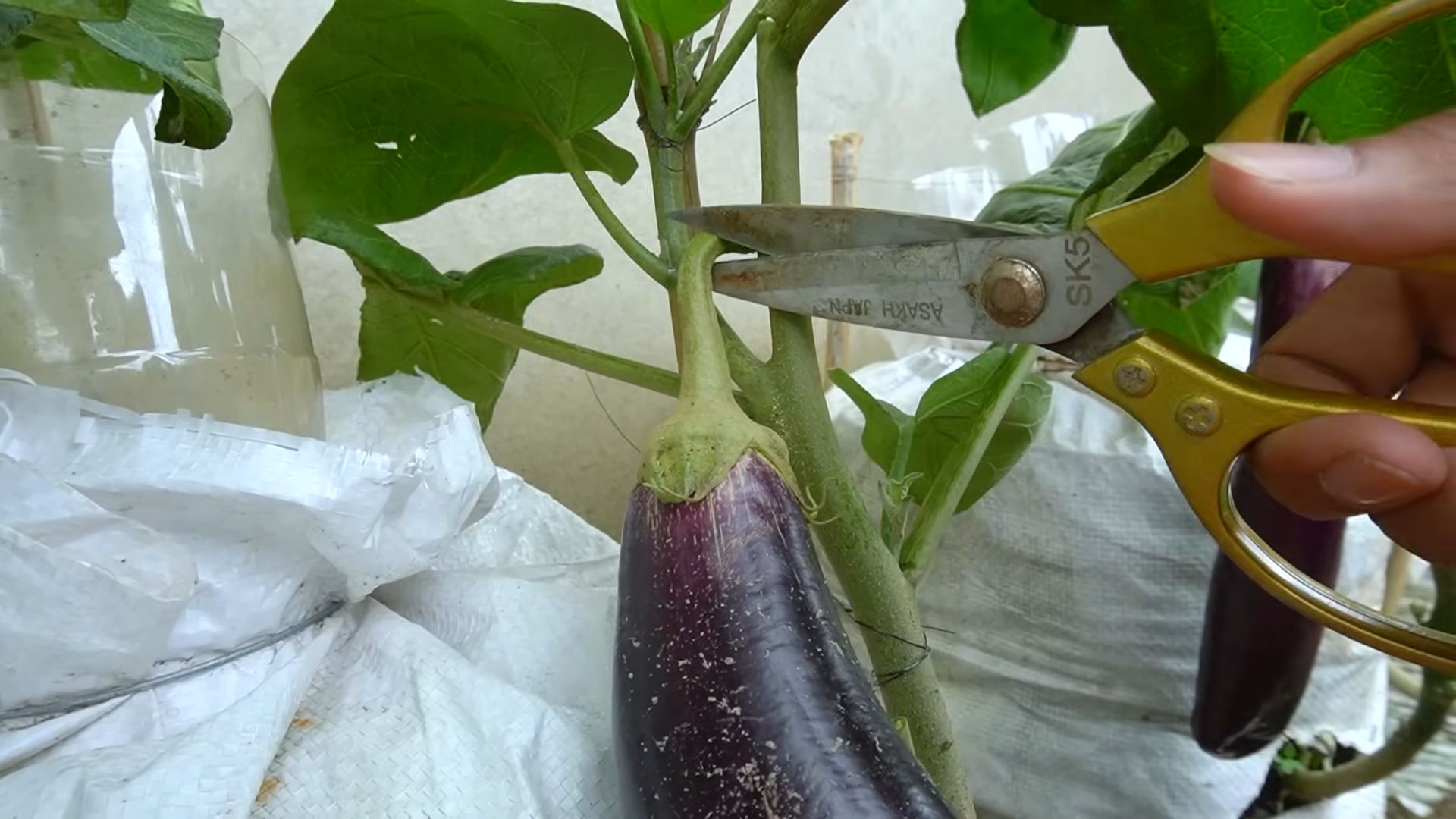
Easy Home Eggplant Planting: A Beginner’s Guide
Hey there, fellow gardening enthusiasts! I’m so excited to share my foolproof method for growing eggplants right in your backyard. Trust me, even if you think you have a “brown thumb,” you can totally do this. Eggplants can seem a little intimidating, but with the right approach, you’ll be harvesting beautiful, glossy fruits in no time. Let’s get started!
Choosing Your Eggplant Variety
Before we even think about planting, we need to pick the right eggplant variety. This is super important because different varieties thrive in different climates and have varying sizes and flavors. Here are a few of my favorites:
* Black Beauty: This is a classic for a reason! It’s reliable, produces large, dark purple fruits, and is relatively easy to grow.
* Ichiban: If you’re looking for something a little different, Ichiban eggplants are long and slender with a delicate flavor. They also tend to produce earlier in the season.
* Fairy Tale: These adorable little eggplants are perfect for containers and have a mild, sweet taste. Plus, they’re just so darn cute!
* Japanese Eggplant: Similar to Ichiban, these are long and thin, perfect for stir-fries and grilling.
Consider your local climate and what you plan to do with your eggplants when choosing. Check the seed packet or plant label for information on days to maturity and recommended growing conditions.
Preparing Your Planting Area
Eggplants are sun-loving divas, so finding the perfect spot is crucial. They need at least 6-8 hours of direct sunlight each day.
* Sunlight: As I mentioned, sunlight is key. Make sure your chosen spot isn’t shaded by trees or buildings.
* Soil: Eggplants prefer well-drained, fertile soil with a slightly acidic pH (around 6.0-6.8). If your soil is heavy clay or sandy, you’ll need to amend it.
* Amending the Soil: This is where the magic happens! I like to add plenty of compost and well-rotted manure to my soil. This improves drainage, adds nutrients, and helps retain moisture. You can also add some bone meal for extra phosphorus, which promotes strong root growth.
* Testing the Soil: A soil test kit from your local garden center can help you determine your soil’s pH and nutrient levels. This will give you a better idea of what amendments you need to add.
Starting from Seed (Optional, but Rewarding!)
Starting eggplants from seed gives you more control over the process and allows you to choose from a wider variety of cultivars. However, it does require a bit more time and effort.
* When to Start: Eggplants need a long growing season, so you’ll need to start your seeds indoors about 8-10 weeks before the last expected frost in your area.
* Seed Starting Supplies: You’ll need seed starting trays or pots, seed starting mix, a heat mat (optional, but helpful), and a grow light.
* Sowing the Seeds: Fill your seed starting trays with seed starting mix and moisten it gently. Sow the seeds about 1/4 inch deep and cover them lightly with soil.
* Providing Warmth and Light: Eggplant seeds need warmth to germinate. A heat mat can help maintain a consistent temperature of around 80-85°F. Once the seedlings emerge, place them under a grow light to prevent them from becoming leggy.
* Watering: Keep the soil consistently moist, but not soggy. Water from the bottom to avoid damping off, a fungal disease that can kill young seedlings.
* Hardening Off: Before transplanting your seedlings outdoors, you’ll need to harden them off. This means gradually exposing them to outdoor conditions over a period of 1-2 weeks. Start by placing them in a sheltered spot for a few hours each day, gradually increasing the amount of time they spend outdoors.
Transplanting Your Eggplant Seedlings (or Purchased Plants)
Whether you started your own seedlings or purchased plants from a nursery, transplanting them into your garden is a crucial step.
1. Timing is Everything: Wait until the danger of frost has passed and the soil has warmed up to at least 60°F. Eggplants are very sensitive to cold temperatures.
2. Preparing the Planting Holes: Dig holes that are slightly larger than the root balls of your seedlings. Space the plants about 24-36 inches apart, depending on the variety. Check the plant label for specific spacing recommendations.
3. Adding Fertilizer: Before placing the seedlings in the holes, add a handful of compost and a tablespoon of slow-release fertilizer to each hole. This will give your plants a boost of nutrients.
4. Carefully Removing the Seedlings: Gently remove the seedlings from their containers, being careful not to damage the roots. If the roots are pot-bound (tightly circling the bottom of the container), gently loosen them before planting.
5. Planting Depth: Plant the seedlings at the same depth they were growing in their containers.
6. Watering Thoroughly: After planting, water the seedlings thoroughly to help them settle in.
7. Mulching: Apply a layer of mulch around the plants to help retain moisture, suppress weeds, and regulate soil temperature. I like to use straw or shredded leaves.
Caring for Your Eggplant Plants
Once your eggplants are in the ground, it’s time to provide them with the care they need to thrive.
* Watering: Eggplants need consistent moisture, especially during hot, dry weather. Water deeply and regularly, aiming for about 1-2 inches of water per week. Avoid overhead watering, as this can promote fungal diseases.
* Fertilizing: Feed your eggplants every 2-3 weeks with a balanced fertilizer. You can also use a liquid seaweed fertilizer for an extra boost of nutrients.
* Staking or Caging: As your eggplants grow, they may need support to prevent the branches from breaking under the weight of the fruit. Staking or caging is a good way to provide this support.
* Pruning: Pruning can help improve air circulation and encourage fruit production. Remove any suckers (small shoots that grow from the base of the plant) and any yellowing or diseased leaves.
* Pest Control: Eggplants can be susceptible to pests such as aphids, flea beetles, and tomato hornworms. Inspect your plants regularly and take action if you see any signs of infestation. You can use insecticidal soap, neem oil, or hand-pick the pests off the plants.
* Weed Control: Keep the area around your eggplants free of weeds. Weeds compete with your plants for water and nutrients.
Harvesting Your Eggplants
Harvesting your eggplants at the right time is crucial for getting the best flavor and texture.
1. When to Harvest: Eggplants are typically ready to harvest about 60-80 days after transplanting, depending on the variety. The fruits should be firm, glossy, and have a deep, rich color.
2. Checking for Ripeness: Gently press the skin of the eggplant. If it springs back readily, it’s ripe. If it feels soft or mushy, it’s overripe.
3. Harvesting Technique: Use a sharp knife or pruning shears to cut the eggplant from the plant, leaving about an inch of stem attached.
4. Handling with Care: Eggplants are delicate and can bruise easily, so handle them with care.
5. Storage: Store your harvested eggplants in the refrigerator for up to a week.
Troubleshooting Common Eggplant Problems
Even with the best care, you may encounter some problems while growing eggplants. Here are a few common issues and how to address them:
* Blossom End Rot: This is a common problem caused by calcium deficiency. The bottom of the fruit develops a dark, sunken spot. To prevent blossom end rot, make sure your soil is well-drained and that you’re providing your plants with adequate calcium. You can add lime to your soil or use a calcium-rich fertilizer.
* Fungal Diseases: Eggplants are susceptible to fungal diseases such as early blight and verticillium wilt. To prevent these diseases, provide good air circulation, avoid overhead watering, and use disease-resistant varieties.
* Pest Infestations: As mentioned earlier, eggplants can be attacked by various pests. Inspect your plants regularly and take action if you see any signs of infestation.
Enjoying Your Homegrown Eggplants
Now for the best part – enjoying the fruits (or vegetables!) of your labor! There are so many delicious ways to prepare eggplants. Here are a few of my favorites:
* Grilled Eggplant: Slice the eggplant into rounds, brush with olive oil, and grill until tender.
* Eggplant Parmesan: Bread and bake eggplant slices, then layer
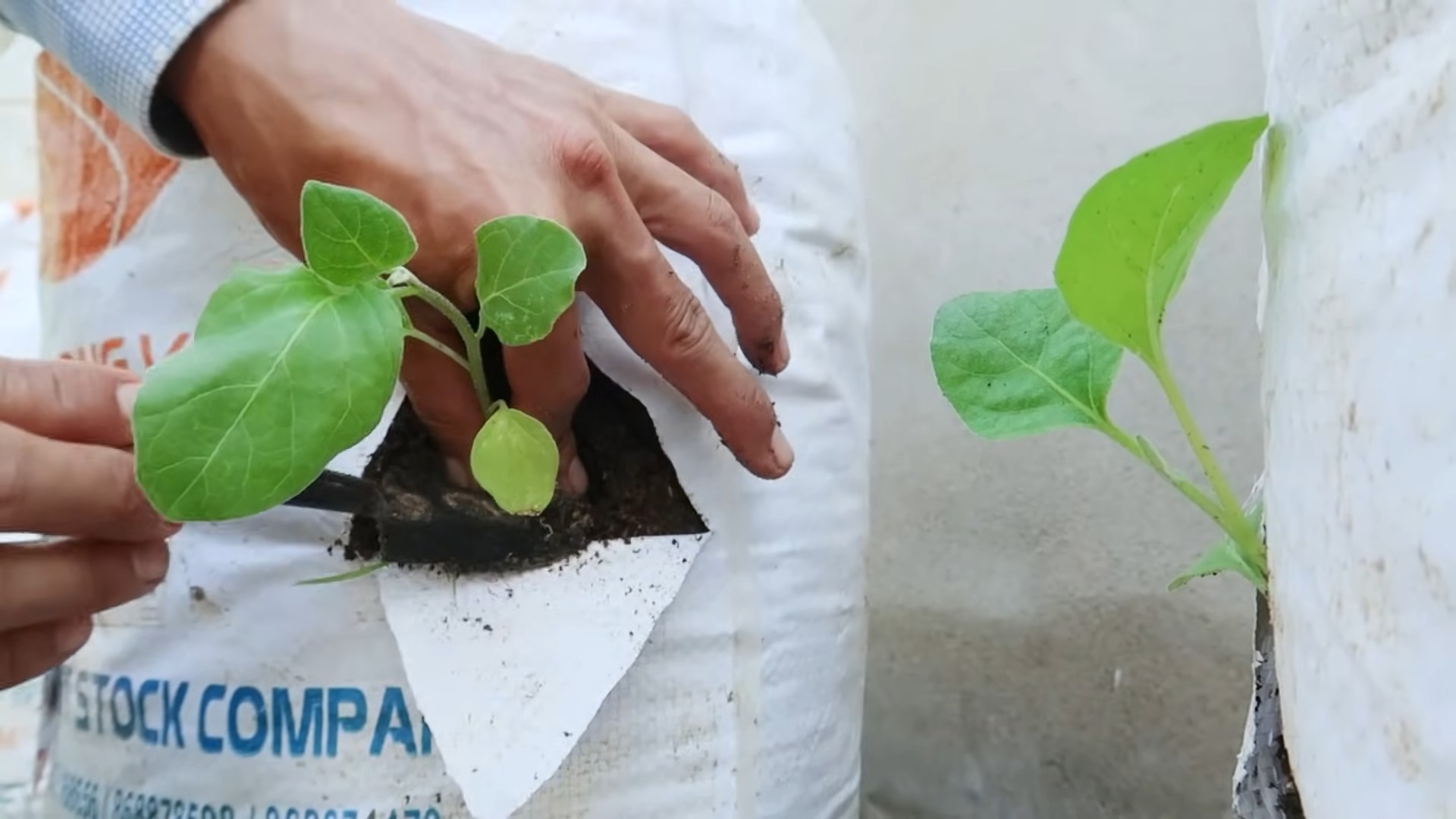
Conclusion
So, there you have it! Transforming your kitchen scraps into thriving eggplant seedlings is not just a fun project; it’s a sustainable and incredibly rewarding way to grow your own food. We’ve walked you through the simple steps of easy home eggplant planting, from carefully extracting the seeds to nurturing them into robust little plants ready for your garden. Why spend money on store-bought seedlings when you can unlock the potential hidden within a single eggplant?
This DIY trick is a must-try for several compelling reasons. First and foremost, it’s incredibly cost-effective. You’re essentially getting free eggplant plants from something you would have otherwise discarded. Second, it’s environmentally friendly, reducing food waste and promoting a more sustainable lifestyle. Third, it’s deeply satisfying to witness the entire life cycle of a plant, from seed to harvest, all thanks to your own efforts. Finally, you have complete control over the variety of eggplant you grow. Choose your favorite heirloom variety or experiment with something new and exciting!
But the fun doesn’t stop there! Feel free to experiment with different eggplant varieties. Perhaps you want to try growing the classic Black Beauty, the slender Japanese eggplant, or even the vibrant Thai eggplant. The possibilities are endless! You can also adjust the growing medium to suit your specific climate and soil conditions. Some gardeners prefer a mix of peat moss, perlite, and vermiculite, while others opt for a more organic blend with compost and coconut coir. Don’t be afraid to tweak the process to find what works best for you.
Consider starting your seeds indoors earlier in the season if you live in a colder climate. This will give your seedlings a head start and ensure they’re ready to transplant outdoors when the weather warms up. You can also use grow lights to supplement natural sunlight, especially during the shorter days of winter.
Once your seedlings are ready to transplant, be sure to choose a sunny location with well-drained soil. Eggplants are heavy feeders, so amend the soil with plenty of compost or aged manure before planting. Water regularly and fertilize every few weeks with a balanced fertilizer.
We are confident that you’ll find this easy home eggplant planting method to be both enjoyable and successful. It’s a fantastic way to connect with nature, learn about plant propagation, and enjoy the delicious fruits (or rather, vegetables!) of your labor.
Now, it’s your turn! We encourage you to give this DIY trick a try and share your experience with us. Did you encounter any challenges? What varieties of eggplant did you grow? What tips and tricks did you discover along the way? We’d love to hear your stories and see your photos! Share your successes (and even your failures – we all learn from them!) in the comments section below. Let’s build a community of eggplant enthusiasts and help each other grow the best eggplants possible! Happy planting!
Frequently Asked Questions (FAQ)
1. What is the best time to start eggplant seeds indoors?
The ideal time to start eggplant seeds indoors is typically 6-8 weeks before the last expected frost in your area. This allows the seedlings ample time to develop a strong root system and become established before being transplanted outdoors. Check your local frost dates to determine the appropriate timing for your region. Starting too early can result in leggy, weak seedlings, while starting too late may not give them enough time to mature and produce fruit before the end of the growing season.
2. What type of soil is best for starting eggplant seeds?
A light, well-draining seed starting mix is crucial for successful germination and seedling development. Avoid using garden soil, as it can be too heavy and may contain pathogens that can harm young seedlings. A good seed starting mix typically consists of peat moss, vermiculite, and perlite. You can also add a small amount of compost for added nutrients. Ensure the mix is moist but not soggy before sowing the seeds.
3. How deep should I plant the eggplant seeds?
Eggplant seeds should be planted about ¼ to ½ inch deep in the seed starting mix. Planting them too deep can prevent them from germinating, while planting them too shallow can cause them to dry out. Gently cover the seeds with the mix and lightly water them.
4. What is the ideal temperature for eggplant seed germination?
Eggplant seeds require warm temperatures to germinate successfully. The ideal temperature range is between 75-85°F (24-29°C). You can use a heat mat to provide consistent warmth and speed up the germination process. Once the seeds have germinated, you can lower the temperature slightly to around 70°F (21°C).
5. How long does it take for eggplant seeds to germinate?
Eggplant seeds typically germinate within 7-14 days, depending on the temperature and moisture levels. Keep the seed starting mix consistently moist but not waterlogged during this period. Once the seedlings emerge, provide them with plenty of light to prevent them from becoming leggy.
6. How much light do eggplant seedlings need?
Eggplant seedlings require at least 6-8 hours of direct sunlight per day. If you don’t have access to a sunny window, you can use grow lights to supplement natural sunlight. Position the grow lights a few inches above the seedlings and adjust the height as they grow.
7. When should I transplant eggplant seedlings outdoors?
Eggplant seedlings should be transplanted outdoors after the last expected frost and when the soil has warmed up to at least 60°F (15°C). Harden off the seedlings by gradually exposing them to outdoor conditions for a week or two before transplanting. This will help them acclimate to the sun, wind, and temperature changes.
8. What are some common problems when growing eggplants from seed?
Some common problems include damping off (a fungal disease that affects young seedlings), leggy seedlings (caused by insufficient light), and slow growth (due to cold temperatures or nutrient deficiencies). To prevent damping off, use a sterile seed starting mix and avoid overwatering. Provide adequate light to prevent leggy seedlings. Ensure the soil is warm and well-drained to promote healthy growth.
9. Can I grow eggplants in containers?
Yes, eggplants can be successfully grown in containers, especially if you have limited garden space. Choose a large container (at least 5 gallons) with drainage holes. Use a high-quality potting mix and provide regular watering and fertilization. Container-grown eggplants may require more frequent watering than those grown in the ground.
10. What are some good companion plants for eggplants?
Good companion plants for eggplants include basil, marigolds, thyme, and beans. Basil helps to repel pests, while marigolds attract beneficial insects. Thyme can help to improve the flavor of eggplants, and beans can fix nitrogen in the soil, benefiting the eggplants. Avoid planting eggplants near fennel, as it can inhibit their growth.
11. How do I know when my eggplants are ready to harvest?
Eggplants are typically ready to harvest when they are firm, glossy, and have reached their mature size. The skin should be smooth and unblemished. Gently press the skin with your thumb; if it leaves a slight indentation, the eggplant is ripe. Use a sharp knife or pruning shears to cut the eggplant from the plant, leaving a short stem attached.
12. What are some tips for preventing pests and diseases in eggplants?
To prevent pests and diseases, practice good garden hygiene, such as removing weeds and debris. Use row covers to protect young plants from pests. Monitor your plants regularly for signs of pests or diseases and take action promptly. Organic pest control methods, such as insecticidal soap or neem oil, can be effective for controlling many common eggplant pests. Ensure proper air circulation to prevent fungal diseases.

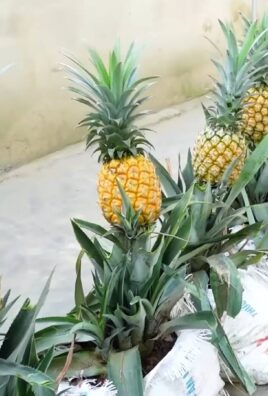
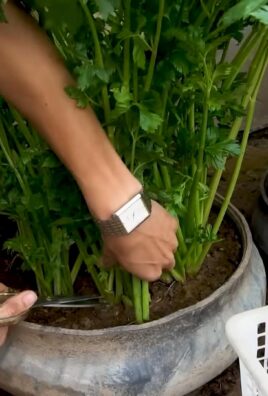
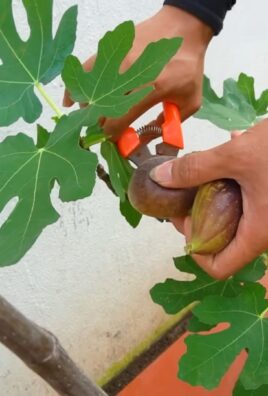
Leave a Comment